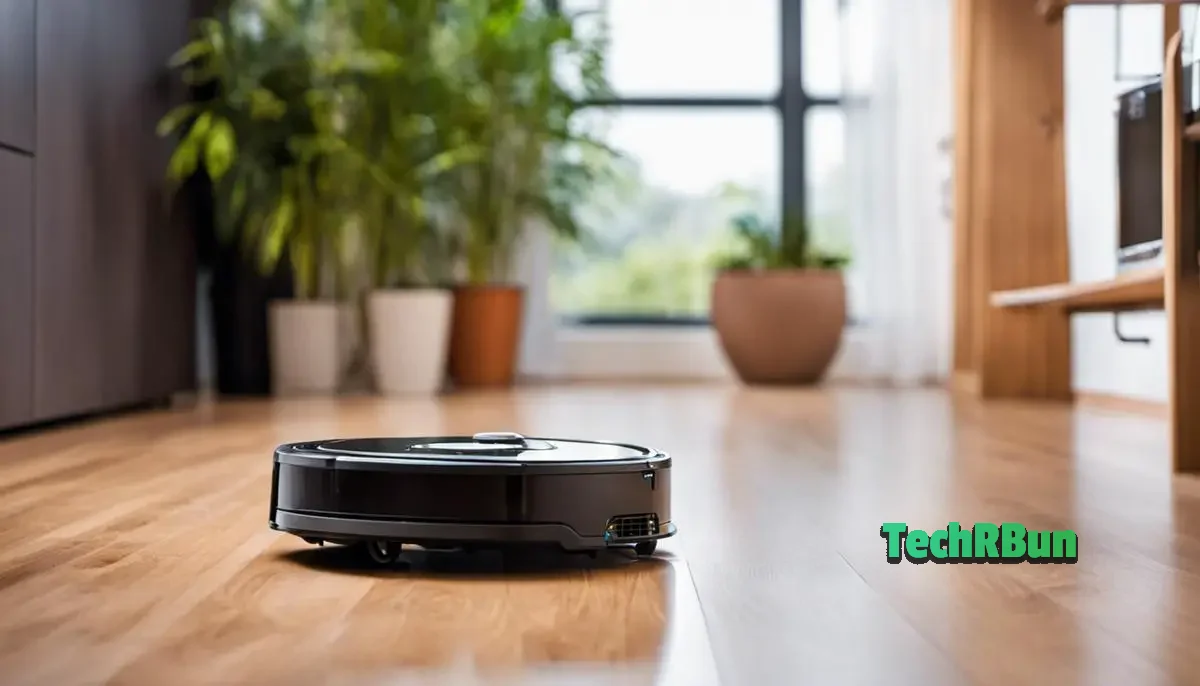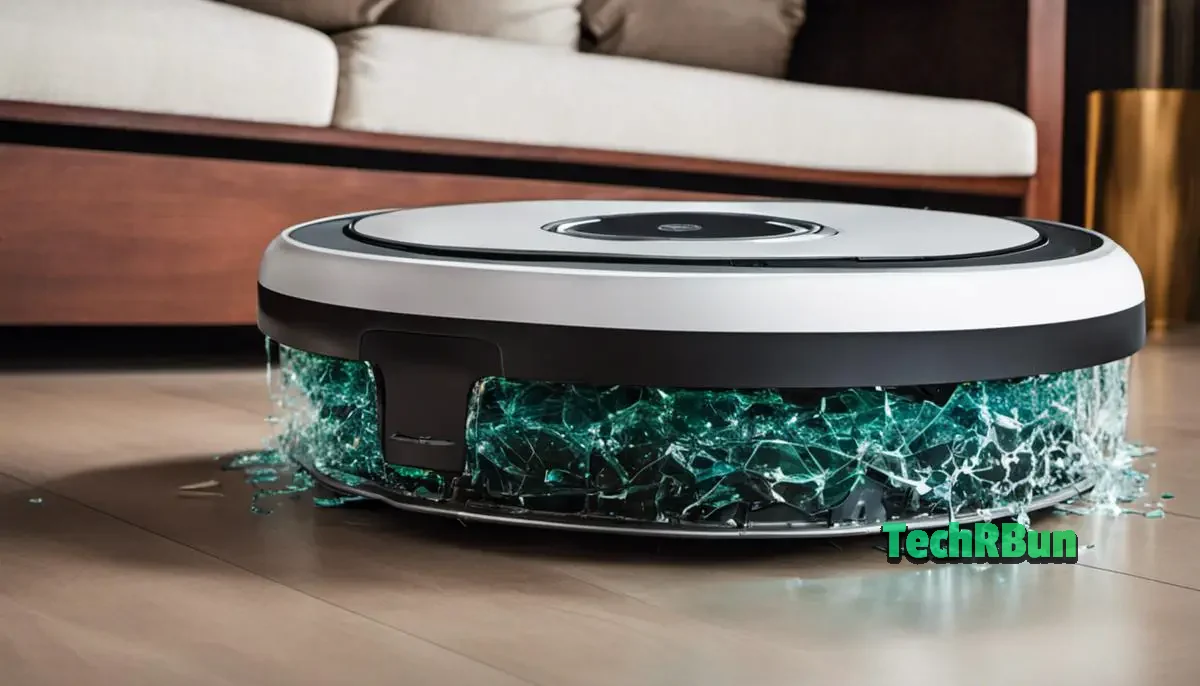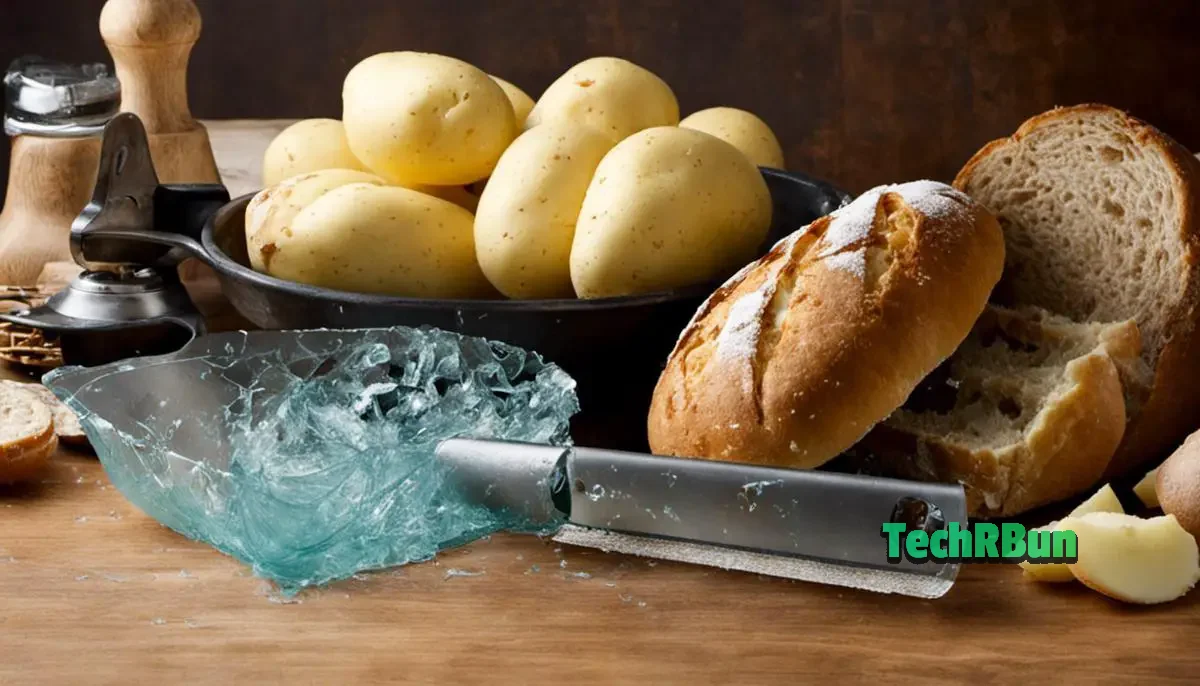Robot vacuum cleaners like Roomba have revolutionized the way we handle our household cleaning tasks, offering a hands-free, automated solution to keep our spaces dust-free. However, their impressive functionality and convenient automation doesn’t necessarily extend to all cleaning tasks.
Specifically, dealing with broken glass is a caveat that requires a deeper understanding of Roomba’s functionality, potential risks, and limitations.
Through a close exploration of the manufacturer’s guidelines and by shedding light on alternatives of tackling shattered glass, this discussion aims to provide clear insights on why Roomba might not be the best solution for cleaning broken glass.
Table of Contents
Understanding Roomba’s Functionality
How Roomba Works
The Roomba robotic vacuum cleaner, manufactured by iRobot, is a popular household gadget designed to autonomously clean your home.
Its primary function is to vacuum various types of flooring including carpet, hardwood, tile, and linoleum. Equipped with a suite of sensors, Roomba is capable of navigating around furniture and other obstacles in its path, while intelligently mapping your house to provide a comprehensive cleaning.
Roomba operates in multiple cleaning modes which include spot cleaning, entire level cleaning, and scheduled cleaning.
Spot cleaning is a mode where Roomba vacuums a localized spot intensively.
On the other hand, entire level cleaning ensures the robot covers every accessible part of your home on its own discretion.
Lastly, Roomba can be programmed to clean routinely at a particular day and time of your choosing through its scheduled cleaning mode.
Roomba’s Capabilities
The Roomba robotic vacuum cleaner features a meticulously designed three-stage cleaning system.
The side brush pushes dirt out from edges and corners towards the cleaning path. Then, the dual multi-surface brushes work together to pick up both smaller particles like dust and larger debris such as food crumbs. Finally, the vacuum suction pulls in the dirt and traps it inside the dust bin.
Roomba’s Dirt Detect Technology aids in recognizing areas with a high concentration of dirt, allowing the robot to spend extra time cleaning those spots.
Also, Roomba is characterized by advanced navigation software incorporating vSLAM technology, which maps the environment to effectively navigate and clean your home.
Equipped with a Cliff Detect sensor, Roomba prevents itself from falling off ledges or stairs, providing safe operation in multi-level homes. Also, it can adjust automatically to different floor types and is capable of transitioning from hard floors to carpets or vice versa without any intervention.
Limitations of Roomba
In spite of Roomba’s capabilities, there are limitations to its functions. Roomba might struggle with very dark color floors due to its cliff sensors interpreting it as an edge or a drop-off point. Similarly, it might get stuck in cable clutter or fringe carpet. It’s also important to keep the Roomba out of very small spaces where it could get stuck.
Roomba and Broken Glass
On the question of whether Roomba can clean broken glass, the answer is highly discouraged. While the Roomba is designed to handle small debris and particle pickup, broken glass can pose a hazard to the robotic vacuum.
The sharp edges of glass can damage the robot’s brushes and internal mechanisms. Moreover, there’s a risk of scattering smaller shards of glass across the cleaning area while attempting to vacuum them – a potential safety hazard for household members or pets.
In this scenario, the manufacturer’s recommendation is to manually clean larger debris such as broken glass before activating the Roomba to vacuum.
Safety and Care of Roomba
As part of caring for and maintaining your Roomba, always ensure the dust bin is regularly emptied and the filters are cleaned or replaced as needed.
Also, the brushes must be cleaned of hair or fibers that may get tangled, hindering the cleaning efficiency. Regularly check and clean Roomba’s sensors to ensure smooth navigation.
Abiding by these guidelines will help ensure your Roomba robotic vacuum cleaner remains an efficient and convenient part of your cleaning routine.
Remember to avoid using it on broken glass or other large, sharp debris to protect both the longevity of your unit and the safety of your household.

Potential Hazards of Roomba Cleaning Broken Glass
Damage to the Roomba
Broken glass can be highly damaging to a Roomba vacuum cleaner. The raw, abrasive edges of shattered glass can easily scratch the plastic body of the Roomba.
More concerning, though, are potential internal damages. Glass shards can infiltrate the Roomba’s interior systems and potentially ruin the device’s circuits, gears, and wheels.
Worst case scenarios include permanent damage to the motor or navigational system, rendering the robotic vacuum defunct.
Risk of Incomplete Cleaning
Given the design of a Roomba, it may not be able to fully clean up all the glass pieces thoroughly.
The brushes within the Roomba are created to sweep small dust particles and pieces of dirt, not jagged, large pieces of glass.
In particular, very tiny fragments or slivers of glass may be left unseen by the Roomba’s sensor and remain on the floor.
This can result in a potentially dangerous situation for both humans and pets in the household who might unknowingly step on these remnants.
Scattering and Spreading of Glass Shards
Roomba vacuums operate by roaming randomly around a room. In the case of cleaning up broken glass, this can be problematic.
Instead of containing the problem, the Roomba might spread the broken glass throughout the house.
As it moves in its random path, the Roomba may push or fling glass shards scarily far from the initial breakage site.
Such scattering of sharp glass increases the area where one needs to be cautious when walking, and thus augments the risk of injury.
Safety Hazard for Humans And Pets
Let’s not forget that Roombas are not designed to handle hazardous materials like broken glass.
Therefore, if someone unknowingly steps on a glass piece while the Roomba is cleaning, there is the risk of injury.
Attempting to remove the glass from the Roomba can also pose a risk if not done carefully.
Possible Voiding of Warranty
Certain behaviors made by the operator of the Roomba, if deemed as misuse of the product, can void the manufacturer warranty.
An example of such misuse would be using the Roomba to clean up broken glass, as the product’s instructions and agreement terms generally specify what materials it is and isn’t safe to vacuum.
Using your Roomba to clean up glass shards could therefore potentially void any warranty on the product and may lead to the user having to pay out-of-pocket for any necessary repairs or replacements.
Due to these potential hazards, it is always safer to manually clean up broken glass with a broom and dustpan, taking special care to ensure all pieces, especially the small ones, are removed.

Alternative Methods for Cleaning Broken Glass
Method One: The Bread Trick
One of the simplest ways to clean up broken glass is with an unconventional tool: a slice of bread.
After you’ve picked up the larger pieces of glass and discarded them carefully, press a slice of bread over the area where the glass was broken.
The soft, spongy texture of the bread will pick up even the tiniest shards of glass.
After using the bread, wrap it in a bag before discarding to avoid accidental injury.
Method Two: The Damp Paper Towel Approach
Another similar approach is using a damp paper towel. The moisture allows the small shards of glass to stick to the towel.
Carefully blot the area where the glass was broken. Once you are done, dispose of the used towel in a safe manner, ensuring that it doesn’t pose a risk to anyone.
Method Three: The Tape Technique
Transparent adhesive tape is another good option for picking up tiny shards of glass. This is especially useful in carpeted areas where glass shards may be hard to see.
Take a strip of transparent tape, press it on the area where the glass was broken and pull it up.
The shards should stick to the tape and be safely lifted away. Wrap the tape around itself with the glass inside before disposing of it.
Method Four: The Potato Method
An alternative method includes using a potato. Yes, a raw, uncooked potato.
Cut the potato in half and carefully press it onto the area where the glass broke.
The moisture inside the potato should help it attract and hold onto the tiny shards of glass.
Like with the bread, be cautious when disposing of the potato to avoid injury.
Method Five: Vacuuming
Vacuuming should be your last resort, once all the larger and visible pieces have been removed using other methods.
Precision attachments or brushes can help to cover all the nooks and crannies where shards may hide. Ensure to empty and carefully handle the vacuum bag or container that may now contain glass shards.
In summary, while robotic vacuum cleaners like a Roomba shouldn’t be used to clean up broken glass as it could potentially damage the machine’s internal structure, these five methods offer a safer, dedicated alternative that can efficiently handle the task.

Ultimately, the versatility of a Roomba does have its limits, and handling broken glass is one such limitation.
Despite the device’s sophisticated design and ability to efficiently clean dust and debris, broken glass presents a risk to both the device and the user.
In addition, the potential of glass pieces scattering further can lead to complications well beyond the primary cleanup zone.
Therefore, it is advisable to resort to traditional, tried-and-true methods, such as using a broom and dustpan, damp paper towels, or even bread to effectively and safely remove the shattered mess.
Until more sophisticated cleaning technology evolves, these manual methods remain the safest and most reliable solutions to cleaning broken glass.







